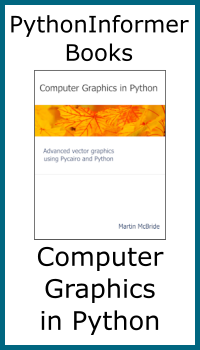Python syntax overview

In this article we will look at the main differences in Python syntax compared to other languages. In this section, by other languages we mainly mean C like languages (C/C++, Java etc), as these are the most commonly used languages.
Comments
Python uses the # character to mark the rest of the line as a comment (similar to // in other languages). It doesn't use support block comments (there is no equivalent to /* ... */).
Statements
- Python does not require a semicolon at the end of a statement
- Every statement must be on a separate line
x = a + b
print(x)
Variables
- Variables are untyped - any variable can hold any type of data
- Variables do not need to be declared, you create a variable by assigning a value to it
x = 3 # x holds an integer
y = 7.8 # y holds a float
x = 'abc' # Now x holds a string
Code blocks
- Like other languages, Python uses nested blocks for if statements, loops and function bodies
- A block is introduced by a colon
- All statements in a block must be indented by the same amount
- The end of a block is indicated by the indentation returning to its previous level
if a > b: # Colon starts block
a = b # This line is part of the if block
b = 0 # This line is also part of the if block
print(a) # This line is not part of the if block
If statements
- Python uses
ifandelselike many other languages - You can use
eliffor extra clauses - It is not necessary to put brackets around conditions, and most programmers don't
- Python has no
switchstatement - useifstatements withelifclauses instead
if a == 1
# Case 1
elif a == 2
# Case 2
else
# Other cases
Conditions
- Python uses comparison operators such as
>or!=similar to many other languages - Compound conditions use keywords
and,or,not(rather than&&,||,!) - A numerical value of 0 tests as false, any other value is true. Similarly a list or string tests as false if empty, true if not empty
While loops
- Similar to other languages, but with Python block syntax
- There is no
do ... whileconstruct
a = 5
while a > 0:
print(a)
a -= 1
For loops
forloops always loop over a sequence, such as a list or the characters of a string- The
rangefunction creates a sequence of numbers, similar to a tradition C style for loop
for i in range(5): # equivalent to for(i = 0; i < 5; i++)
print(i)
Defining functions
- Functions are defined using
defkeyword - Parameters can be given default values
- There are many more options, see declaring functions
def add(a, b, c=0): # c is optional, defaults to 0
return a + b + c
Calling functions
- Similar to other languages
- Parameters with default values can be omitted
- You can use parameter names, either for clarity or to reorder them
- There are many more options, see calling functions
add(1, 2) # c defaults to 0
add(2, 4, 6) # c is now 6
add (a=2, b=4, c=6) # Naming the parameters
Join the GraphicMaths/PythonInformer Newsletter
Sign up using this form to receive an email when new content is added to the graphpicmaths or pythoninformer websites:
Popular tags
2d arrays abstract data type and angle animation arc array arrays bar chart bar style behavioural pattern bezier curve built-in function callable object chain circle classes close closure cmyk colour combinations comparison operator context context manager conversion count creational pattern data science data types decorator design pattern device space dictionary drawing duck typing efficiency ellipse else encryption enumerate fill filter for loop formula function function composition function plot functools game development generativepy tutorial generator geometry gif global variable greyscale higher order function hsl html image image processing imagesurface immutable object in operator index inner function input installing integer iter iterable iterator itertools join l system lambda function latex len lerp line line plot line style linear gradient linspace list list comprehension logical operator lru_cache magic method mandelbrot mandelbrot set map marker style matplotlib monad mutability named parameter numeric python numpy object open operator optimisation optional parameter or pandas path pattern permutations pie chart pil pillow polygon pong positional parameter print product programming paradigms programming techniques pure function python standard library range recipes rectangle recursion regular polygon repeat rgb rotation roundrect scaling scatter plot scipy sector segment sequence setup shape singleton slicing sound spirograph sprite square str stream string stroke structural pattern symmetric encryption template tex text tinkerbell fractal transform translation transparency triangle truthy value tuple turtle unpacking user space vectorisation webserver website while loop zip zip_longest
